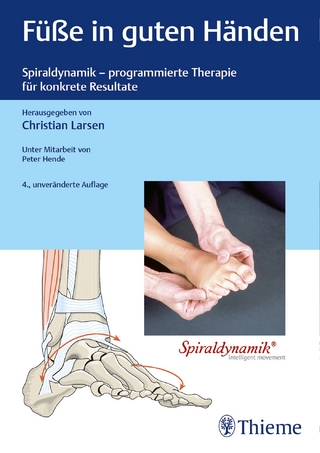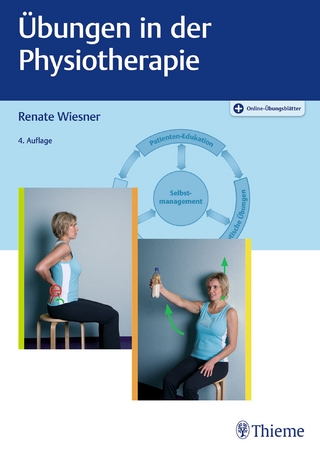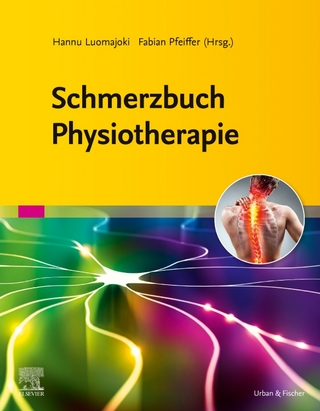
BioMEMS and Biomedical Nanotechnology
Springer-Verlag New York Inc.
978-0-387-25561-3 (ISBN)
The frontiers of microtechnology and nanotechnology are changing the face of medicine through the efforts of researchers to build biomedical microelectromechanical systems, or bioMEMS - tiny working machines so small, they measure only a few millionths of a meter across. BIOMEMS AND BIOMEDICAL NANOTECHNOLOGY, edited by Mauro Ferrari, comprises the first comprehensive reference devoted to all aspects of research in the diagnostic and therapeutic applications of Micro-Electro-Mechanical Systems (MEMS), microfabrication, and nanotechnology. Contributions report on fundamental and applied investigations of the material science, biochemistry, and physics of biomedical microdevices.
General subjects treated include the design, characterization, testing, modeling and clinical validation of microfabricated systems and their integration on-chip and in larger functional units. Intended to be accessible to professionals and researchers from both the center of this fast-developing technology and adjacent fields, BIOMEMS AND BIOMEDICAL NANOTECHNOLOGY delivers a valuable knowledge base of key research and applications articles from acknowledged experts on an international scope.
Each volume is very well illustrated with many figures appearing in color.
This major reference includes contributions from world renowned experts in the field and consists of four volumes:
Volume I: BIOMEDICAL AND BIOLOGICAL NANOTECHNOLOGY (Volume Editors, Abraham Lee and James Lee) - focuses on synthetic nanodevices and the synthesis of nanomaterials and the generation of nanoscale features. The nanomaterials include polymeric microspheres and nanostructures, carbon nanotubes, silicon, silicon dioxide, and iron oxide. There is also a chapter on the characterization of critical nanostructures for bio applications such as nanochannels and nanopores. The second part involves hybrid synthetic-biomolecular nanodevices that utilize the self assembly properties of both biomolecules and synthetic materials.
Volume II: MICRO/NANO TECHNOLOGY FOR GENOMICS AND PROTEOMICS (Volume Editors, Mihrimah Ozkan and Michael Heller) - reports on fundamental and applied investigations of the material science, biochemistry, and physics of biomedical microdevices with applications to Genomics and Proteomics. Topics include gene expression profiling utilizing microarray technology; imaging and sensing for gene detection and use in DNA analysis, and coverage of advanced microfluidic devices.
Volume III: THERAPEUTIC MICRO/NANOTECHNOLOGY (Volume Editors, Tejal Desai and Sangeeta Bhatia) - treats the emerging area of therapeutic micro- and nanotechnology. Subjects covered include: cell-based therapeutics, regenerative medicine - merging cells with micro- and nanosystems, and integrating MEMS with cells and tissues; Drug delivery - intravascular nanoparticles for drug targeting and nonvascular delivery (implantable, oral, inhalable); molecular surface engineering for the biological interface, biomolecule patterning and cell patterning.
Volume IV: BIOMOLECULAR SENSING, PROCESSING AND ANALYSIS (Volume Editors, Rashid Bashir and Steve Wereley) - is a balanced review of key aspects of BioMEMS sensors, including (i) BioMEMS sensors and materials, (ii) means of manipulating biological entities at the microscale, and (iii) micro-fluidics and characterization.
Professor Mauro Ferrari is a pioneer in the fields of bioMEMS and biomedical nanotechnology. As a leading academic, a dedicated entrepreneur, and a vision setter for the Nation's premier Federal programs in nanomedicine, he brings a three-fold vantage perspective to his roles as Editor-in-Chief for this work. Dr. Ferrari has authored or co-authored over 150 scientific publications, 6 books, and over 20 US and International patents. Dr. Ferrari is also Editor-in-Chief of Biomedical Microdevices and series editor of the new Springer series on Emerging Biomedical Technologies. Several private sector companies originated from his laboratories at the Ohio State University and the University of California at Berkeley over the years. On a Federal assignment as Special Expert in Nanotechnology and Eminent Scholar, he has provided the scientific leadership for the development of the Alliance for Cancer Nanotechnology of the National Cancer Institute, the world-largest medical nanotechnology operation to date. Dr. Ferrari trained in mathematical physics in Italy, obtained his Master's and Ph.D. in Mechanical Engineering at Berkeley, attended medical school at The Ohio State University, and served in faculty positions in Materials Science and Engineering, and Civil and Environmental Engineering in Berkeley, where he was first tenured. At Ohio State he currently serves as Professor of Internal Medicine, Division of Hematology and Oncology, as Edgar Hendrickson Professor of Biomedical Engineering, and as Professor of Mechanical Engineering. He is Associate Director of the Dorothy M. Davis Heart and Lung Research Institute, and the University's Associate Vice President for Health Science, Technology and Commercialization.
Volume I: Biological and Biomedical Nanotechnology.- Part I Synthetic Nanodevices for Biotechnology and Biomedicine: Biomolecular Sensing for Cancer Diagnostics Using Carbon Nanotubes.- Microspheres for Drug Delivery.- X Nanoscale Polymer Fabrication for Biomedical Applications.- 3D Micro- and Nanofabrication and Their Medical Application.- Sacrificial Oxide Layer for Drug Delivery.- Carbon Nanotube Biosensors.- Characterization Methods for Quality Control of Nanopore and Nanochannel Membranes.- Magnetic Nanoparticles for MR Imaging.- Part II Hybrid Synthetic and Biomolecular Nanodevices: Polymer Design for Nonviral Gene Delivery.- Dip-pen Technologies for Biomolecular Devices.- Engineered Inorganic-Binding Polypeptides for Bionanotechnology.- Dynamic Nanodevices Based on Protein Molecular Motors.- Nanodevices in Biomedical Applications.- Part III Computation, Simulation, and Informatics for Bionano Devices: Modeling Biomolecular Transport at the Nanoscale.- Nanotechnology in Cancer Drug Therapy: A Biocomputational Approach.- Nanomechanics and Tissue Pathology. Volume 2: Micro and Nano-Tecnologies for Genomics and Proteomics.- Part I Application of Microarray Technologies: Electronic Microarray Technology and Applications in Genomics and Proteomics.- Gene Expression Profiling Utilizing Microarray Technology and RY-PCR.- Microarray and Fluidic Chip for Extracellular Sensing.- Cell Physiometry Tools Based on Dielectrophoresis.- Hitting the Spot: The Promise of Protein Microarrays.- Use of Electric Field Array Devices for Assisted Assembly of DNA Nanocomponents and Other Nanofabrication Applications.- Peptide Arrays in Proteomics and Drug Discovery.- From One-bead One-compound Combinatorial Libraries to Chemical Microarrays.- Part II Advanced Microfluidic Devices and Human Genome Project: Plastic Microfluidic Devices for DNA and Protein Analyses.- Centrifuge Based Fluidic Platforms.- Sequencing the Human Genome: A Historical Perspective on Challenges for Systems Integration.- Part III Nanoprobes for Imaging, Sensing and Therapy: Hairpin Nanoprobes for Gene Detection.- Fluorescent Lanthanide Labels with Time-resolved Fluorometry in DNA Analysis.- Role of SNPs and Haplotypes in Human Disease and Drug Development.- Control of Biomolecular Activity by Nanoparticle Antennas.- Sequence Matters: The Influence of Basepair Sequence on DNA-Protein Interactions.- Engineered Ribozymes: Efficient Tools for Molecular Gene Therapy and Gene Discovery.- Volume 3: Therapeutic Micro/Nanotechnology.- Part I Cell-based Therapeutics: Nano- and Micro- Technology to Spatially and Temporally Control Proteins for Neural Regeneration.- 3-D Fabrication Technology for Tissue Engineering.- Designed Self-assembling Peptide Nanobiomaterials.- At the Interface: Advanced Microfluidic Assays for Study of Cell Function.- Multi-phenotypic Cellular Arrays for Biosensing.- Mems and Neurosurgery.- Part II Drug Delivery: Vascular Zip Codes and Nanoparticle Targeting.- Engineering Biocompatible Quantum Dots for Ultrasensitive, Real-Time Biological Imaging and Detection.- Diagnostic and Therapeutic Applications of Metal Nanoshells.- Nanoporous Microsystems for Islet Cell Replacement.- Medical Nanotechnology and Pulmonary Pathology.- Nanodesigned Pore-Containing Systems for Biosensing and Controlled Drug Release.- Cell Biology on a Chip: A Microfluidic Cell Culture Laboratory.- Supported Lipid Bilayers as Mimics for Cell Surfaces and as Tools in Biotechnology.-Transdermal Drug Delivery Using Low-Frequency Sonophoresis.- Microdevices for Oral Drug Delivery.- Nanoporous Implants for Controlled Drug Delivery.- Part III Molecular Surface Engineering for the Biological Interface: Micro and Nanoscale Smart Polymer Technologies in Biomedicine.- Supported Lipid Bilayers as Mimics for Cell Surfaces and as Tools in Biotechnology.- Engineering Cell Adhesion.- Cell Biology on a Chip: A Microfluidic Cell Culture Laboratory.- Volume 4: Biomolecular Sensing, Processing and Analysis.- Part I Micro and Nanoscale Biosensors and Materials: Biosensors and Biochips.- Cantilever Assays: A Universal Platform for Multiplexed Label-Free Bioassays.- An On-chip Artificial Pore For Molecular Sensing.- Cell Based Chemical Sensing Technologies.- Fabrication issues of Biomedical Micro Devices.- Intelligent Polymeric Networks In Biomolecular Sensing.- Part II Processing and Integrated Systems: A Multi-Functional Micro Total Analysis System (µ TAS) Platform for Transport and Sensing of Biological Fluids using Microchannel Parallel Electrodes.- Dielectrophoretic Traps for Cell Manipulation.- BioMEMS for Cellular Manipulation and Analysis.- Implantable Wireless Microsystems.- Microfluidic Tectonics: An integrated organic autonomous platform.- AC Electrokinetic Stirring and Focusing of Nanoparticles.- Part III Micro-fluidics and Characterization: Particle Dynamics in a Dielectrophoretic Microdevice.- Microfluidics Simulations I.- Modeling Electroosmotic Flow in Nanochannels.- Nano-Particle Image Velocimetry: A Near-Wall Velocimetry Technique with Submicron Spatial Resolution.- Optical MEMS-Based Sensor Development with Applications to Microfluidics.- Vascular Cell Responses to Fluid Shear Stress.
| Erscheint lt. Verlag | 30.11.2006 |
|---|---|
| Reihe/Serie | BioMEMS and Biomedical Nanotechnology | 1.10 |
| Mitarbeit |
Chef-Herausgeber: Mauro Ferrari |
| Zusatzinfo | 20 Tables, black and white; 431 Illustrations, black and white; LXXX, 1856 p. 431 illus. 4 volume-set. |
| Verlagsort | New York, NY |
| Sprache | englisch |
| Maße | 165 x 248 mm |
| Themenwelt | Medizin / Pharmazie ► Physiotherapie / Ergotherapie ► Orthopädie |
| Naturwissenschaften ► Physik / Astronomie ► Angewandte Physik | |
| Technik ► Elektrotechnik / Energietechnik | |
| Technik ► Medizintechnik | |
| Technik ► Umwelttechnik / Biotechnologie | |
| ISBN-10 | 0-387-25561-3 / 0387255613 |
| ISBN-13 | 978-0-387-25561-3 / 9780387255613 |
| Zustand | Neuware |
| Haben Sie eine Frage zum Produkt? |
aus dem Bereich


